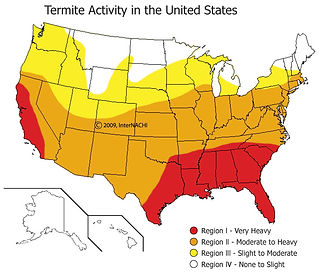
Termite/Wood Destroying Pest Inspection (WDI)
Wood is a biological material. If protected from moisture and insect attack, it can last for centuries. When wood is not properly protected, however, it will succumb to biological processes that decompose wood: insects that eat the wood or fungi that cause rot and decay. The most damaging insects that attack structural wood are termites. Their activity results in damage and control costs that exceed $1.5 billion per year nationally. Beetles are the next important group of insects that attack wood, while bees, wasps and ants are third in importance, depending on geographical location. Wood-inhabiting fungi are another group of organisms that occasionally cause problems.
In nature, termites are very beneficial insects because they return dead trees to the soil as nutrients. Unfortunately, termites do not distinguish between wood in a structure and wood in a dead tree in the forest. Termites are considered pests when they attack structures built and inhabited by humans. Subterranean termites are one of the most potentially damaging insect pests of structures in the U.S.

Source: International Association of Certified Home Inspectors
Entomologists have described about 2,200 species of termites for the entire world; however, only 70 of these species infest structures and require control. Of those, there are 13 species of termites in the continental United States that require human intervention to some extent.

A Compass Termite/Wood Destroying Pest Inspection includes the visual examination of the readily accessible areas of the structures for the presence or absence of wood destroying insects. The inspection includes the probing or sounding of accessible areas, both interior and exterior. If the presence of wood destroying insects, or their damage, is observed, treatment may be recommended.
Wood destroying insects covered in this Inspection include:
-
Termites
-
Carpenter Ants
-
Carpenter Bees
-
Powder Post Beetles
